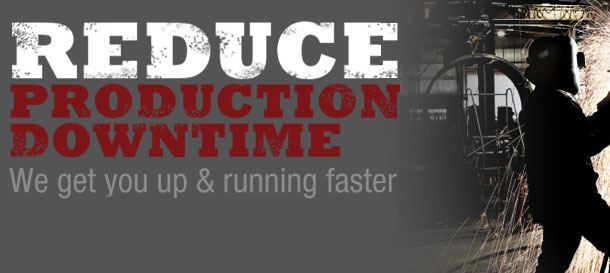
5 questions you should be asking to answer critical questions
In today’s global economy the manufacturing industry has more competition than ever. You must take a deeper look into your business to be competitive in this market. If you are already at the top of your game you have to constantly review and tune your operations by to reducing downtime to stay at the head of the pack.
To Be A Leader, You Need to Measure OEE
OEE is calculated by multiplying each of these factors:
Availability x Performance x Quality
It is critical that you improve efficiency and the best measures of efficiency is OEE (overall equipment effectiveness). If you don’t have a solid appreciation of your OEE, then you don’t know how efficient your could be.
Your operations are comprised of many aspects that go on every day. Your employees come to work on the floor, work centers need to be maintained, and production numbers must be meet. With so much going on all the time, it can be daunting to visualize how things all work together. More to the point, it is very difficult to determine if everything is working together efficiently, and which areas can be improved to increase your overall productivity.
The data being collected can be overwhelming when attempting to determine your plant’s efficiency; it is a very difficult task. This is where OEE can assist.
OEE, the overall equipment effectiveness, is a measure of the efficiency and effectiveness of the manufacturing processes (i.e. machines, cells, assembly lines, processes, etc.). OEE is a simple and powerful metric for tracking and improving a plant’s efficiency.
OEE works by breaking down the reasons for productivity losses into three main factors: Availability, Performance, and Quality.
Availability – This factor measures productivity losses resulting from downtime. Downtime is any event that stops planned production for a period of time. Availability is determined by dividing actual production time by planned production time.
Performance – This is a factor that measures a loss in productivity due to slow cycles. Slow cycles occur when the manufacturing process is running at less than optimum speed. When you divide the current production rate by the ideal production rate, the result is the performance ratio.
Quality – This factor measures losses from manufacturing subpar products – those that do not meet minimum requirements. The Quality ratio is calculated by dividing the number of good units by total units started.
#1 How are you currently tracking your OEE and downtime?
If your answer to this question is that you aren’t tracking OEE or downtime at all, then chances are you are losing money every day.
The question is not whether or not you have downtime occurring – every plant does – the question is how much do you have, and how can you decrease it and improve OEE?
#2 Which plant employees have the greatest effect on your downtime?
There are a lot of employees on a plant floor at any given time, and many of them are doing very different jobs. Understanding which employees are having the greatest impact on your downtime is one of the key factors in running more efficiently.
#3 Do you know how much downtime is occurring that isn’t being reported?
This seems like a trick question. Of course if you knew what downtime wasn’t being reported then it wouldn’t be unknown any more, and that’s the point. If you are unaware of a downtime issue, you won’t know how much it’s costing you.
#4 How are you currently analyzing your downtime data?
No matter how much production and downtime information you collect, data without analysis is essentially useless. It’s the story behind the numbers that you are looking for, and the only real way to find it is through the power of comparison.
#5 How confident are you when making decisions about increasing efficiency?
Once causes that reduce efficiency have been identified, then it’s time to go about resolving them. This means it’s time to make a choice. If your plant has the time, money, and manpower to resolve all the efficiency-reducing causes, that’s great. However, most companies must allocate their resources wisely, which means you will have to make a choice as to which causes to focus on first.
Conclusion
Finding Answers to OEE Questions
Now that you know the questions you need to ask, the next step is finding answers. Each plant is different, with its own unique set of challenges, so there is no one answer that is going to solve every problem. In order to reduce downtime and increase your OEE you need at least two things: commitment and powerful tools.
Commitment – Reducing your downtime and improving your OEE is not a one-time fix. It requires a consistent and continued effort to find and eliminate efficiency-reducing causes. It can only be accomplished if you have a strategy for improving OEE, and that strategy needs to be followed through at every level of the plant. It’s a team effort that requires cooperation and patience.
Powerful Tools – OEE downtime software is a great tool for tracking the factors that affect your OEE. It’s simply the fastest and most accurate way to collect, track and analyze OEE data. There are several products on the market designed to help you improve your OEE and we can help you implement the best solution for your plant.
Moving Forward with Confidence
With powerful tools and a commitment to decreasing downtime at your plant, you will be ready to move forward. Increasing your OEE can be a difficult journey, but asking the right questions and obtaining the power to answer them is the path to getting there. OEE downtime tracking software can give you the confidence that your plan to improve your plant’s OEE is backed up with solid information and analysis.
